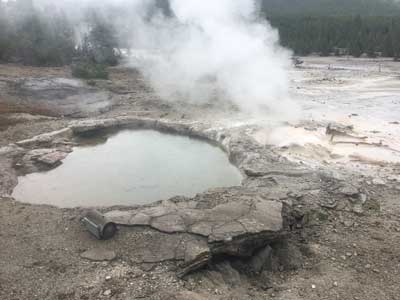Yellowstone National Park Travel Guide
The first national park in the U.S. and is also widely held to be the first national park in the world, the park is known for its wildlife and its many geothermal features, especially Old Faithful geyser
General Information
Accepts America The Beautiful Pass.
From Jackson, WY (128mi) Follow WY-22 W and ID-33 W to ID-32 in Teton County. Follow ID-32 to US-20 E in Ashton. Drive to US-191 S/US-20 E/US-287 S in Gallatin County
Yellowstone National Park is located largely in the northwest corner of Wyoming and extending into Montana and Idaho. It was established on March 1, 1872. Yellowstone was the first national park in the U.S. and is also widely held to be the first national park in the world. The park is known for its wildlife and its many geothermal features, especially Old Faithful geyser, one of its most popular. While it represents many types of biomes, the subalpine forest is the most abundant. It is part of the South Central Rockies forests ecoregion.
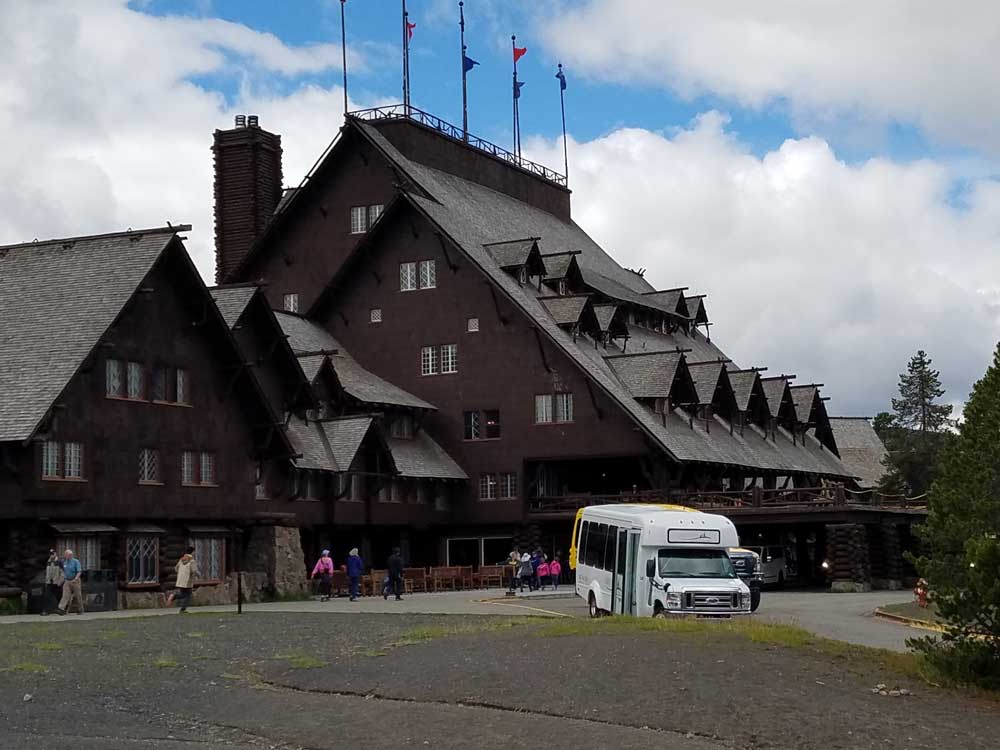
Although Native Americans have lived in the Yellowstone region for at least 11,000 years, aside from visits by mountain men during the early-to-mid-19th century, organized exploration did not begin until the late 1860s. In 1917, administration of the park was transferred to the National Park Service, which had been created the previous year. Hundreds of structures have been built and are protected for their architectural and historical significance, and researchers have examined more than a thousand archaeological sites.
Yellowstone National Park spans an area of 3,468.4 sq mi (8,983 km2), comprising lakes, canyons, rivers, and mountain ranges. Yellowstone Lake is one of the largest high-elevation lakes in North America and is centered over the Yellowstone Caldera, the largest supervolcano on the continent. The caldera is considered a dormant volcano. It has erupted with tremendous force several times in the last two million years. Well over half of the world's geysers and hydrothermal features are in Yellowstone, fueled by this ongoing volcanism. Lava flows and rocks from volcanic eruptions cover most of the land area of Yellowstone. In 1978, Yellowstone was named a UNESCO World Heritage Site.
Hundreds of species of mammals, birds, fish, reptiles, and amphibians have been documented, including several that are either endangered or threatened. The vast forests and grasslands also include unique species of plants. Grizzly bears, wolves, and free-ranging herds of bison and elk live in this park. The Yellowstone Park bison herd is the oldest and largest public bison herd in the United States. Forest fires occur in the park each year; in the large forest fires of 1988, nearly one third of the park was burnt. Yellowstone has numerous recreational opportunities, including hiking, camping, boating, fishing, and sightseeing. Paved roads provide close access to the major geothermal areas as well as some of the lakes and waterfalls. During the winter, visitors often access the park by way of guided tours that use either snow coaches or snowmobiles.
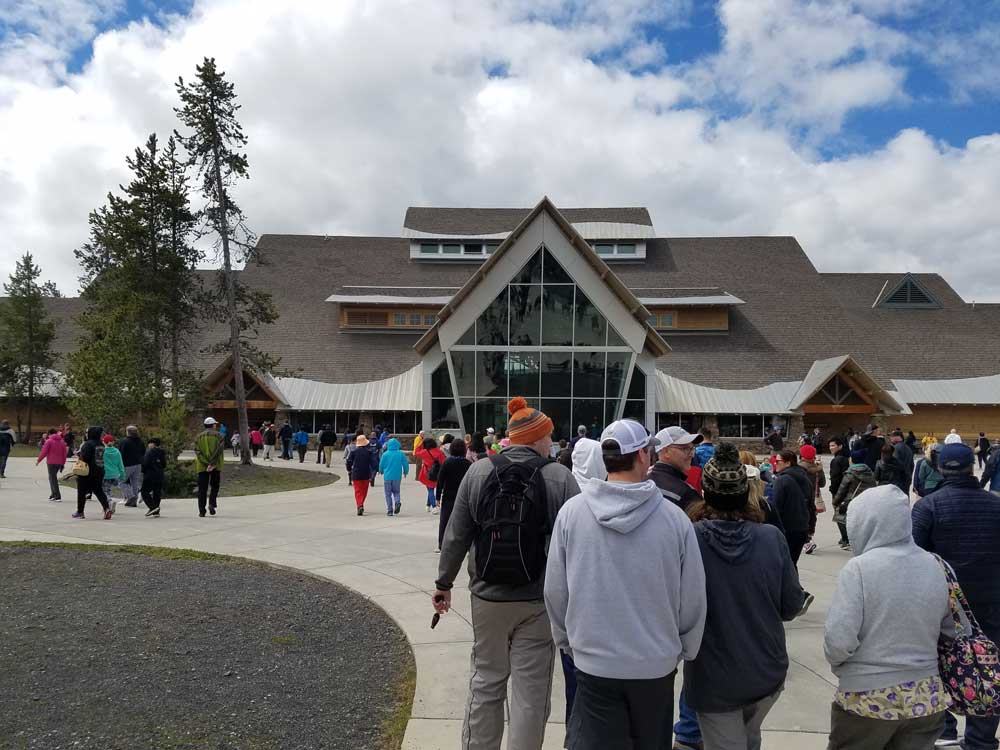
Approximately 96 percent of the land area of Yellowstone National Park is located within the state of Wyoming. Another three percent is within Montana, with the remaining one percent in Idaho. Yellowstone is 2,219,789 acres (8,983 km2; 3,468 sq mi) in area, larger than either of the states of Rhode Island or Delaware.
The park sits on the Yellowstone Plateau, at an average elevation of 8,000 feet (2,400 m) above sea level. The plateau is bounded on nearly all sides by mountain ranges of the Middle Rocky Mountains, which range from 9,000 to 11,000 feet (2,700 to 3,400 m) in elevation. The highest point in the park is atop Eagle Peak (11,358 feet or 3,462 metres) and the lowest is along Reese Creek (5,282 feet or 1,610 metres). Nearby mountain ranges include the Gallatin Range to the northwest, the Beartooth Mountains in the north, the Absaroka Range to the east, the Teton Range to the south, and the Madison Range to the west. The most prominent summit on the Yellowstone Plateau is Mount Washburn at 10,243 feet (3,122 m).
Three deep canyons are located in the park, cut through the volcanic tuff of the Yellowstone Plateau by rivers over the last 640,000 years. The Lewis River flows through Lewis Canyon in the south, and the Yellowstone River has carved two colorful canyons, the Grand Canyon of the Yellowstone and the Black Canyon of the Yellowstone in its journey north.
The most famous geyser in the park, and perhaps the world, is Old Faithful geyser, located in Upper Geyser Basin. Castle Geyser, Lion Geyser, Beehive Geyser, Grand Geyser (the world's tallest predictable geyser), Giant Geyser (the world's most voluminous geyser), Riverside Geyser and numerous other geysers are in the same basin. The park contains the tallest active geyser in the world—Steamboat Geyser in the Norris Geyser Basin. A study that was completed in 2011 found that at least 1283 geysers have erupted in Yellowstone. Of these, an average of 465 are active in a given year. Yellowstone contains at least 10,000 thermal features altogether.
The geothermal areas of Yellowstone include several geyser basins in Yellowstone National Park as well as other geothermal features such as hot springs, mud pots, and fumaroles. These are distributed among nine geyser basins, with a few geysers found in smaller thermal areas throughout the Park. The number of geysers in each geyser basin are as follows: Upper Geyser Basin (410), Midway Geyser Basin (59), Lower Geyser Basin (283), Norris Geyser Basin (193), West Thumb Geyser Basin (84), Gibbon Geyser Basin (24), Lone Star Geyser Basin (21), Shoshone Geyser Basin (107), Heart Lake Geyser Basin (69), other areas (33). Although famous large geysers like Old Faithful are part of the total, most of Yellowstone's geysers are small, erupting to only a foot or two. The hydrothermal system that supplies the geysers with hot water sits within an ancient active caldera. Many of the thermal features in Yellowstone build up sinter, geyserite, or travertine deposits around and within them.
The various geyser basins are located where rainwater and snowmelt can percolate into the ground, get indirectly superheated by the underlying Yellowstone hotspot, and then erupt at the surface as geysers, hot springs, and fumaroles. Thus flat-bottomed valleys between ancient lava flows and glacial moraines are where most of the large geothermal areas are located. Smaller geothermal areas can be found where fault lines reach the surface, in places along the circular fracture zone around the caldera, and at the base of slopes that collect excess groundwater. Due to the Yellowstone Plateau's high elevation the average boiling temperature at Yellowstone's geyser basins is 199 °F (93 °C). When properly confined and close to the surface it can periodically release some of the built-up pressure in eruptions of hot water and steam that can reach up to 390 feet (120 m) into the air (see Steamboat Geyser, the world's tallest geyser). Water erupting from Yellowstone's geysers is superheated above that boiling point to an average of 204 °F (95.5 °C) as it leaves the vent. The water cools significantly while airborne and is no longer scalding hot by the time it strikes the ground, nearby boardwalks, or even spectators. Because of the high temperatures of the water in the features it is important that spectators remain on the boardwalks and designated trails. Several deaths have occurred in the park as a result of falls into hot springs.
Fumaroles: Fumaroles, or steam vents, are the hottest hydrothermal features in the park. They have so little water that it all flashes into steam before reaching the surface. At places like Roaring Mountain, the result is loud hissing of steam and gases.
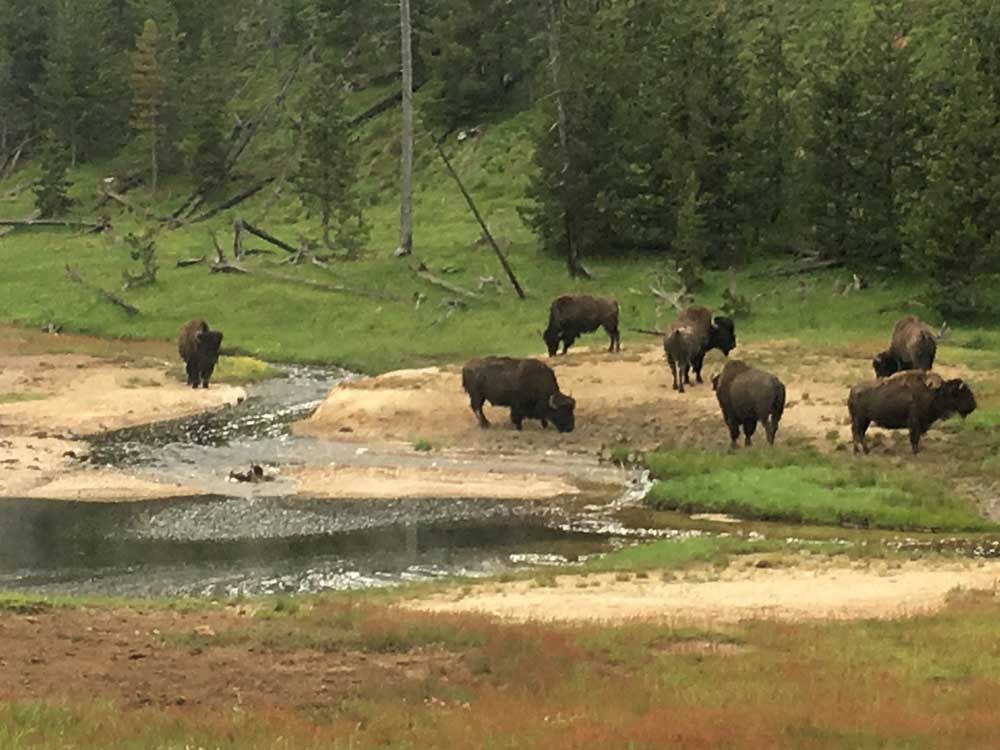
Geysers: Geysers such as Old Faithful are a type of geothermal feature that periodically erupt scalding hot water. Increased pressure exerted by the enormous weight of the overlying rock and water prevents deeper water from boiling. As the hot water rises it is under less pressure and steam bubbles form. They, in turn, expand on their ascent until the bubbles are too big and numerous to pass freely through constrictions. At a critical point the confined bubbles actually lift the water above, causing the geyser to splash or overflow. This decreases the pressure of the system and violent boiling results. Large quantities of water flash into tremendous amounts of steam that force a jet of water out of the vent: an eruption begins. Water (and heat) is expelled faster than the geyser's recharge rate, gradually decreasing the system's pressure and eventually ending the eruption.
Hot springs: Hot springs such as Grand Prismatic Spring are the most common hydrothermal features in the park. Their plumbing has no constrictions. Superheated water cools as it reaches the surface, sinks, and is replaced by hotter water from below. This circulation, called convection, prevents water from reaching the temperature needed to set off an eruption. Many hot springs give rise to streams of heated water.
Mudpots: Mudpots such as Fountain Paint Pots are acidic hot springs with a limited water supply. Some microorganisms use hydrogen sulfide (rotten egg smell), which rises from deep within the earth, as an energy source. They convert the gas into sulfuric acid, which breaks down rock into clay.
Travertine terraces: Travertine terraces, found at Mammoth Hot Springs, are formed from limestone (a rock type made of calcium carbonate). Thermal waters rise through the limestone, carrying high amounts of dissolved carbonate. Carbon dioxide is released at the surface and calcium carbonate deposited as travertine, the chalky white rock of the terraces. These features constantly and quickly change due to the rapid rate of deposition.
This article uses material from the Wikipedia articles "Yellowstone National Park", "Geothermal areas of Yellowstone", which are released under the Creative Commons Attribution-Share-Alike License 3.0
Featured Regions
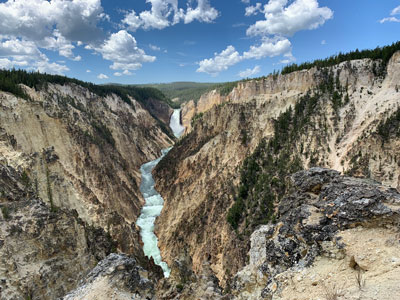
Erik Whalen, CC BY-SA 4.0, via Wikimedia Commons; Image Size Adjusted
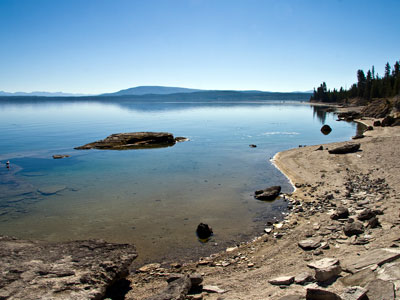
Yellowstone National Park, Public domain, via Wikimedia Commons; Image Size Adjusted
-400.jpg)
Yellowstone National Park, Public domain, via Wikimedia Commons; Image Size Adjusted
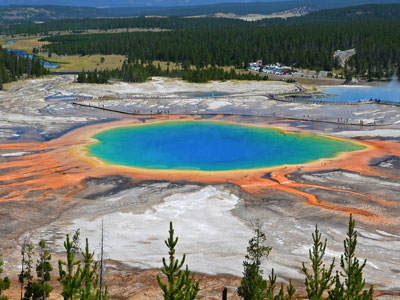
Clément Bardot, CC BY-SA 3.0, via Wikimedia Commons; Image Size Adjusted
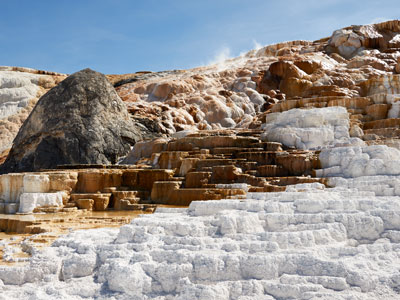
© Frank Schulenburg, CC BY 4.0, via Wikimedia Commons; Image Size Adjusted
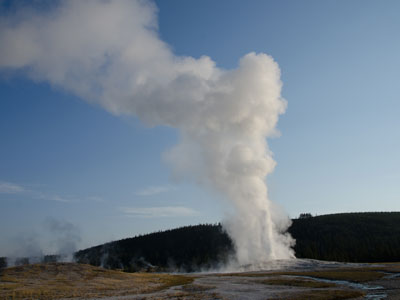
Tigerzeng, CC BY-SA 4.0, via Wikimedia Commons; Image Size Adjusted
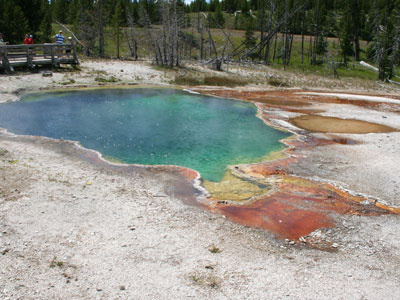
Rik007, CC BY-SA 3.0, via Wikimedia Commons; Image Size Adjusted
